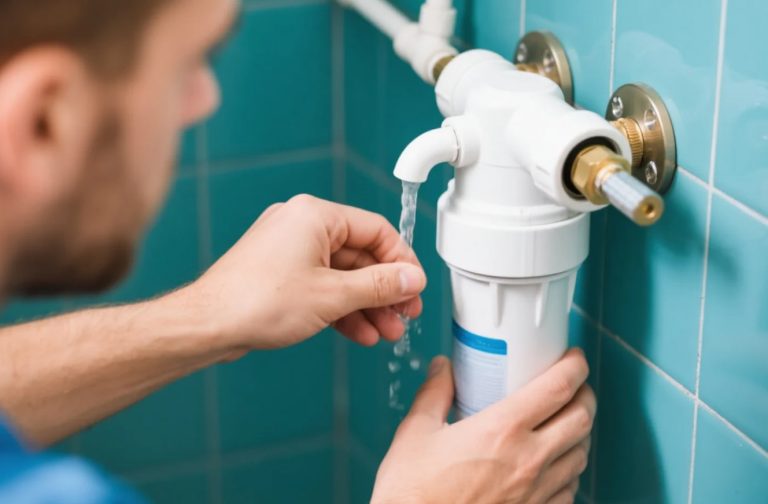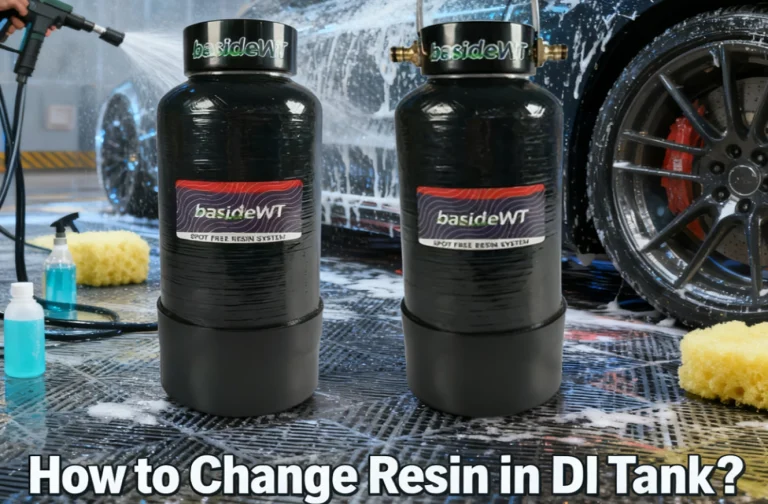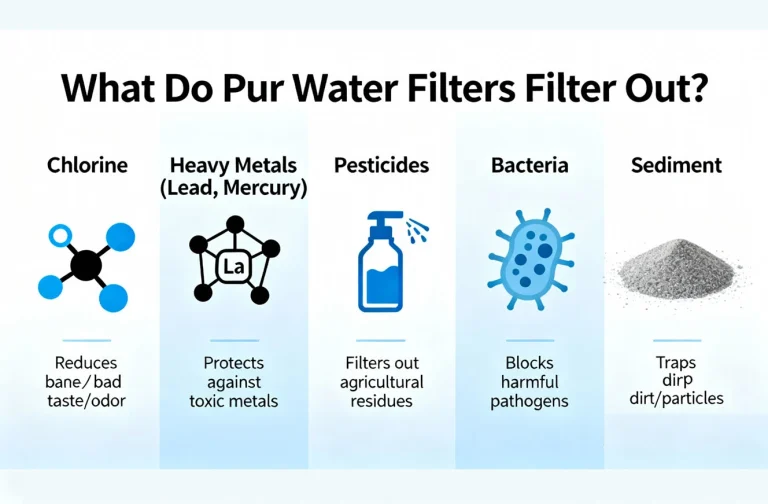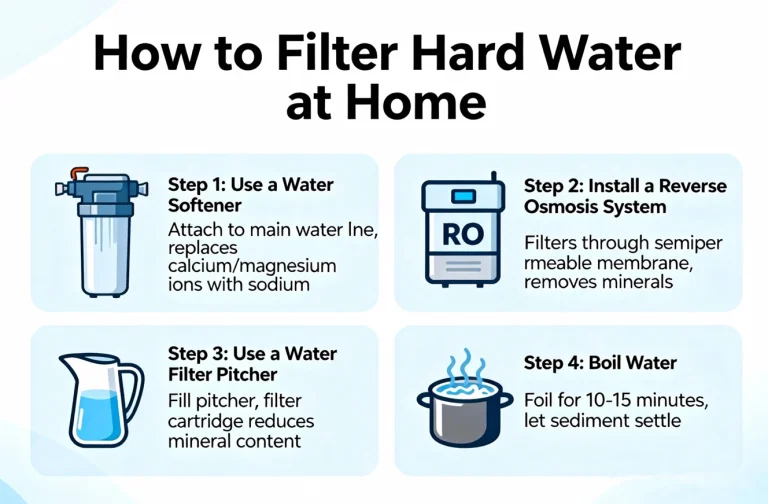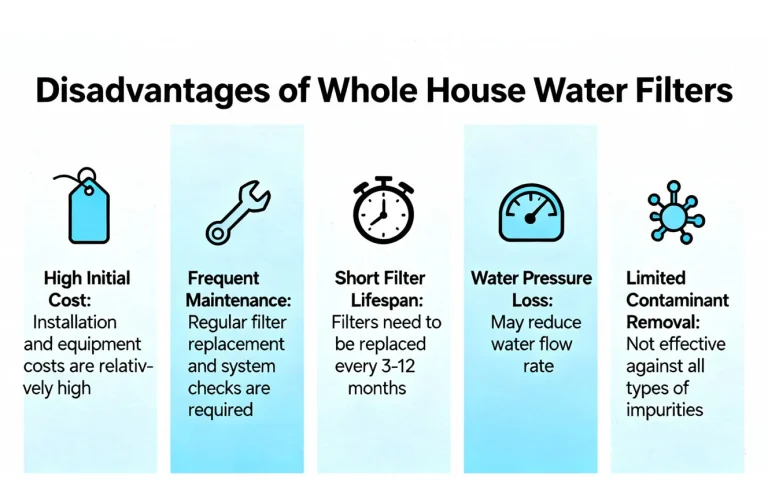BasideWT- Whole Home Water Filtration System & Replacement

How Do Water Treatment Systems Work?
When it comes to ensuring access to clean and safe drinking water, one of the most important questions people ask is: How do water treatment systems work? Whether you’re looking to understand the process for your home, business, or a large-scale industrial operation, water treatment systems are crucial for removing harmful contaminants and making water safe for consumption.
This article explores the intricate processes involved in water treatment, breaking down the steps, technologies, and methodologies used in the most common water treatment systems. We will also answer the question, “How do water treatment systems work?” in various contexts, helping you choose the right solution for your needs.
The Basics of Water Treatment Systems
Before diving into the details of how water treatment systems work, let’s take a step back to understand why water treatment is essential. The primary purpose of water treatment is to remove impurities and contaminants that could pose a health risk or make water unsuitable for its intended use. These contaminants can range from bacteria, viruses, and parasites to heavy metals, chemicals, and organic matter.
Why Do We Need Water Treatment?
Water treatment systems are designed to make water clean, safe, and aesthetically pleasing. While many municipal water systems have already been treated, some households, industries, and rural areas may rely on independent water treatment solutions for purification.
- Health Concerns: Waterborne pathogens like bacteria and viruses can cause diseases. Effective treatment removes these.
- Chemical Pollutants: Agricultural runoff and industrial waste often introduce chemicals like pesticides, heavy metals, and chlorine into the water supply.
- Taste and Smell: Even if the water is free of harmful contaminants, unpleasant taste or odor caused by organic matter or chlorine is also a major concern for consumers.
Types of Water Treatment Methods
To answer the question “how do water treatment systems work?” we must first explore the types of treatment methods commonly used. There are several types of water treatment systems, and each has its specific applications depending on the contaminants present in the water.
1. Physical Filtration: Removing Large Particles
Physical filtration is the first line of defense in water treatment. It involves the removal of large particles like dirt, sand, and debris through various filtration media.
- How it Works: Water passes through a filter that traps particles. These filters come in different sizes and materials, such as sand, charcoal, and fabric.
- Common Systems: Common physical filtration systems include sediment filters and mechanical filters used in both home and industrial settings.
2. Chemical Treatment: Eliminating Harmful Contaminants
Chemical treatment is used to remove specific dissolved impurities from water. Chemicals like chlorine or ozone are added to disinfect the water and kill harmful bacteria and viruses.
- How it Works: Chemicals are added to water to either kill pathogens or break down chemical pollutants.
- Common Systems: Chlorine or ozone disinfection, flocculation (where chemicals are added to bind contaminants into larger particles), and chemical coagulation.
3. Biological Treatment: Using Microorganisms to Purify Water
Biological treatment leverages natural microorganisms to break down and digest organic matter and other pollutants in the water.
- How it Works: Microorganisms, such as bacteria, are introduced into water to decompose organic contaminants, especially in wastewater treatment plants.
- Common Systems: Activated sludge systems, biofiltration, and constructed wetlands are some biological treatment techniques.
4. Reverse Osmosis (RO): Filtering on a Molecular Level
Reverse osmosis is one of the most advanced and effective methods for purifying water, especially in desalination systems.
- How it Works: Water is forced through a semi-permeable membrane that blocks larger molecules like salt, heavy metals, and other contaminants while allowing water molecules to pass through.
- Common Systems: Reverse osmosis units are widely used in both home water purifiers and large-scale desalination plants.
5. UV (Ultraviolet) Treatment: Disinfecting with Light
UV treatment is a disinfection method that uses ultraviolet light to destroy the DNA of microorganisms, rendering them harmless.
- How it Works: Water is passed through a UV chamber where ultraviolet light breaks down the DNA of bacteria and viruses, preventing them from reproducing and causing harm.
- Common Systems: UV sterilizers are commonly used for home filtration systems and in municipal treatment plants for disinfecting water.
Steps in the Water Treatment Process
To answer how do water treatment systems work in practical terms, we must take a step-by-step approach to explain the process that water typically undergoes in a treatment facility. Below is a general breakdown of the steps involved:
1. Pre-Treatment (Screening and Coagulation)
The first stage in the water treatment process involves pre-treating the water to remove large debris and prepare it for further purification.
- Screening: Water is passed through large screens to filter out leaves, twigs, and other debris.
- Coagulation and Flocculation: Chemicals like alum are added to the water to bind small particles together into larger clumps called “flocs.” These flocs are easier to remove in later stages.
2. Sedimentation and Filtration
After coagulation, the water is allowed to sit so that the larger flocs can settle at the bottom of the tank. This is called sedimentation.
- Sedimentation: The water is allowed to stand for several hours so that the heavier particles sink to the bottom.
- Filtration: The remaining water is passed through filters to remove smaller particles, including sand, silt, and microorganisms.
3. Disinfection (Chlorine, Ozone, or UV)
After physical filtration, the water is disinfected to kill any remaining bacteria, viruses, or pathogens that could pose a health risk.
- Chlorine: Chlorine is commonly used for disinfecting water in municipal systems. It kills bacteria and viruses.
- Ozone: Ozone is another powerful disinfectant used in some advanced water treatment systems.
- UV Light: UV treatment is used to disinfect water without chemicals, offering a more environmentally friendly approach.
4. Post-Treatment (pH Adjustment and Polishing)
In the final stage, any remaining impurities are removed, and the water is adjusted to ensure it’s safe and palatable for consumption.
- pH Adjustment: If the water is too acidic or alkaline, chemicals may be added to adjust the pH to a neutral level.
- Polishing Filters: Fine filters are used to remove any remaining small particles or contaminants, ensuring the water is crystal clear and safe to drink.
Case Study: How a Municipal Water Treatment System Works
Let’s now look at a real-world example of how water treatment systems work in a municipal setting. In many cities, water is sourced from rivers or lakes, which often contain high levels of organic material, pollutants, and microorganisms. The water treatment plant follows the steps outlined above to purify this water before it reaches households.
Problem:
A city’s water supply has been contaminated with higher-than-normal levels of agricultural runoff, introducing pesticides and nitrates into the water. This requires a more complex treatment process than usual.
Solution:
To address this problem, the treatment facility installed an advanced multi-stage filtration process. This includes:
- Pre-treatment: Additional coagulation chemicals to bind smaller pollutants like nitrates.
- Advanced Filtration: The use of activated carbon filters and reverse osmosis systems to remove pesticides and other chemicals.
- UV Disinfection: UV lamps are used for final disinfection to kill any remaining pathogens.
Outcome:
After the installation of these advanced systems, the city’s water was tested and found to be free from harmful contaminants. The treated water met all health standards, and the public had improved confidence in their water supply.
Factors That Influence Water Treatment System Efficiency
While understanding how water treatment systems work is crucial, it’s also important to know what factors can impact the performance and effectiveness of these systems.
1. Water Quality
The initial quality of the water entering the treatment system plays a significant role in determining how well the system will function. Water with high levels of pollutants may require more complex treatment solutions, like reverse osmosis or advanced filtration.
2. System Maintenance
The maintenance and upkeep of water treatment systems are critical for ensuring their long-term effectiveness. Regular cleaning, filter replacements, and equipment checks help maintain optimal performance.
3. Technological Advances
As technology improves, more efficient and sustainable water treatment solutions become available. Innovations like membrane filtration, UV treatment, and solar-powered desalination systems are helping to enhance water treatment capabilities.


